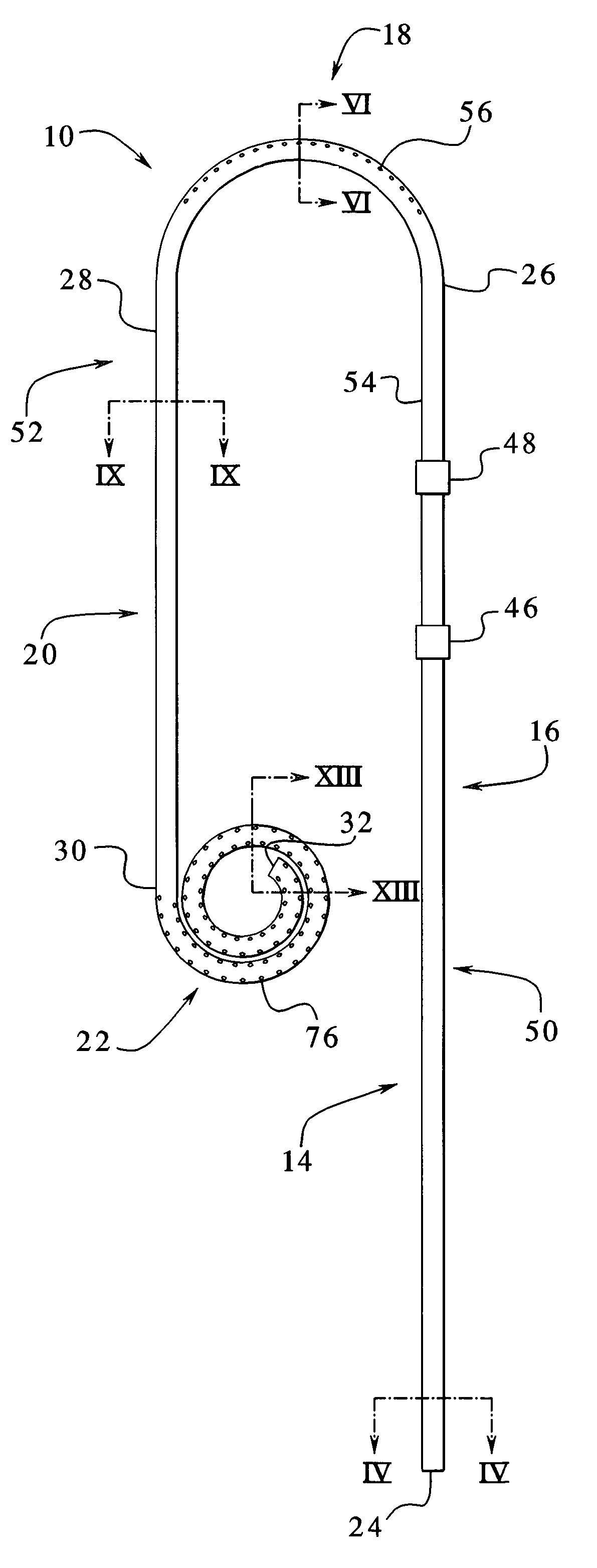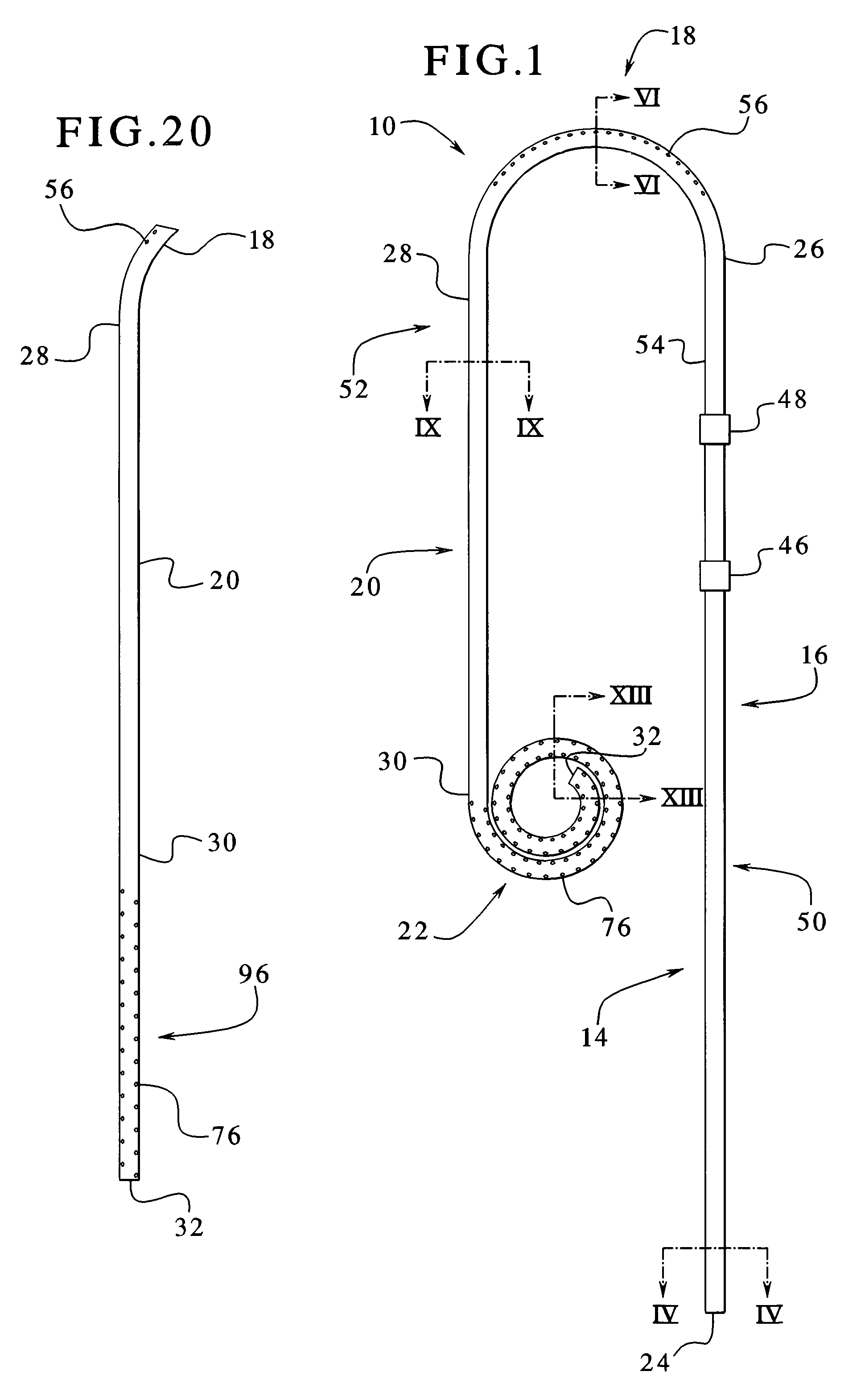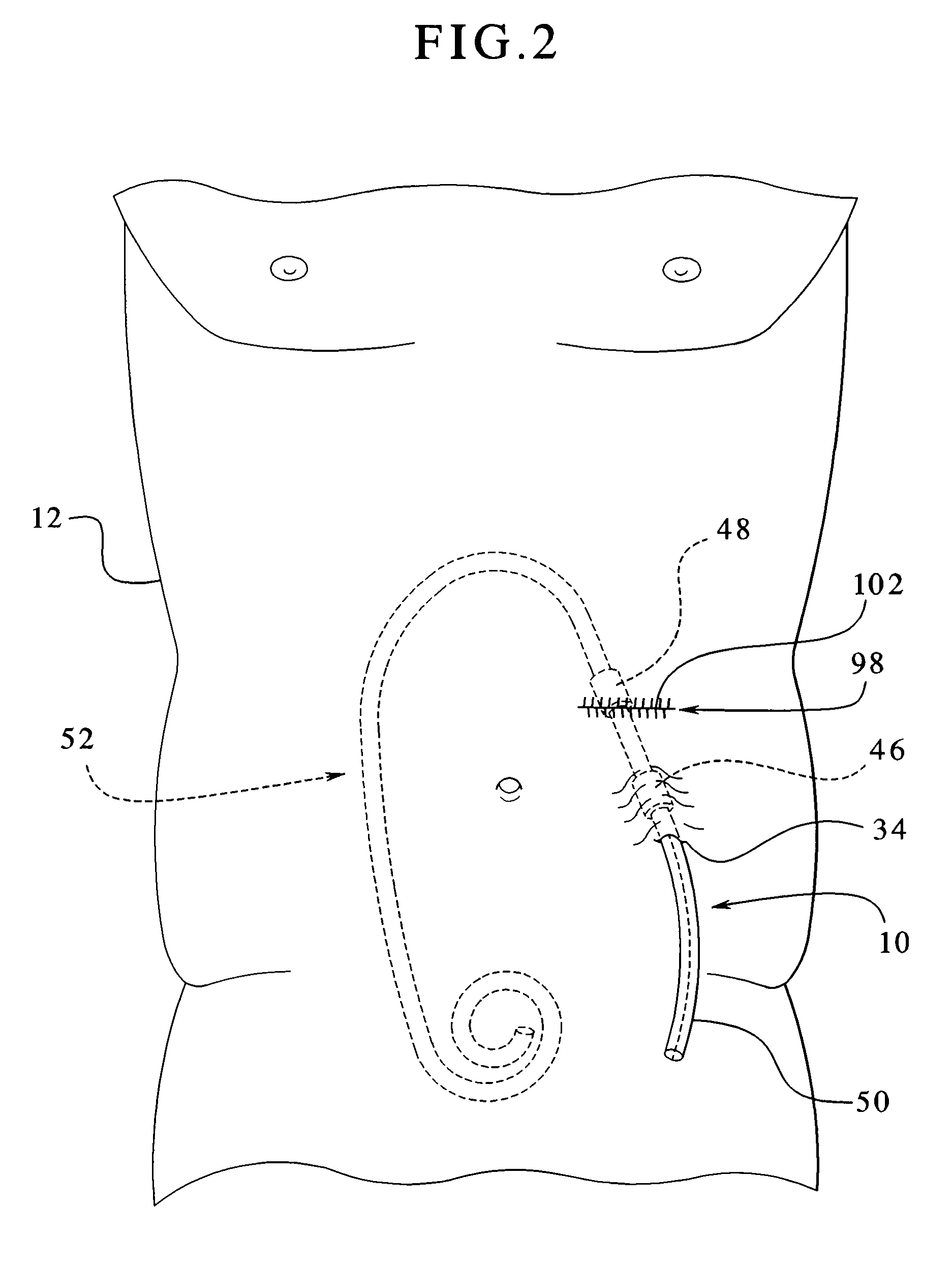Peritoneal dialysis catheters
a peritoneal dialysis and catheter technology, applied in the field of catheters, can solve the problems that the patient's manual peritoneal dialysis requires quite a lot of time and effort, and achieve the effects of enhancing dialysate mixing, minimizing shunting, and enhancing dialysate mixing
- Summary
- Abstract
- Description
- Claims
- Application Information
AI Technical Summary
Benefits of technology
Problems solved by technology
Method used
Image
Examples
Embodiment Construction
[0036]Although the present invention can be made in many different forms, the presently preferred embodiments are described in this disclosure and shown in the attached drawings. This disclosure exemplifies the principles of the present invention and does not limit the broad aspects of the invention only to the illustrated embodiments.
[0037]A new catheter 10 according to the principles of the present invention is shown by way of example in FIG. 1. The catheter 10 is implanted into a patient's peritoneal cavity for peritoneal dialysis. Referring also to FIG. 2, the catheter 10 is shown partially in phantom implanted into a patient 12. The catheter 10 allows for dialysate to be infused into and removed out of the peritoneal cavity. Particularly, the catheter 10 allows for continuous flow peritoneal dialysis treatment. Again, continuous flow peritoneal dialysis means that dialysate flows simultaneously into and out of the peritoneal cavity. The catheter 10 can also be used to perform o...
PUM
 Login to View More
Login to View More Abstract
Description
Claims
Application Information
 Login to View More
Login to View More - R&D
- Intellectual Property
- Life Sciences
- Materials
- Tech Scout
- Unparalleled Data Quality
- Higher Quality Content
- 60% Fewer Hallucinations
Browse by: Latest US Patents, China's latest patents, Technical Efficacy Thesaurus, Application Domain, Technology Topic, Popular Technical Reports.
© 2025 PatSnap. All rights reserved.Legal|Privacy policy|Modern Slavery Act Transparency Statement|Sitemap|About US| Contact US: help@patsnap.com



